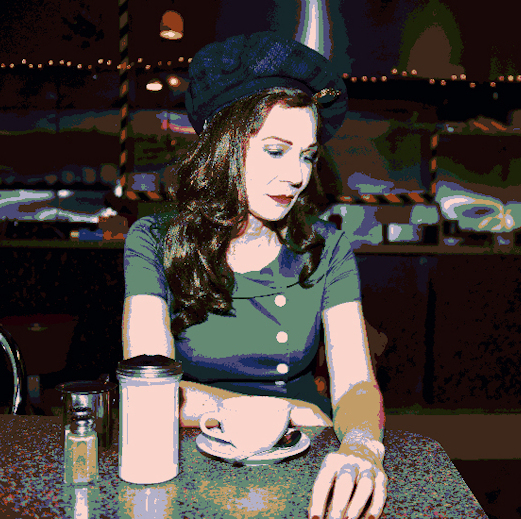
Karen Rempel’s artistic rendering of a Philip Maier photo, capturing the alienation of Edward Hopper’s Automat.
Hector’s Café and Diner, at the corner of Little West 12th Street and Washington, has been serving meatpackers three squares a day since 1949. Open at 3 a.m., it’s always a beacon in the shadow of the High Line (formerly an elevated freight line that was built in 1929). In the pre-dawn hours, Hector’s draws a mixed clientele of workers and partiers in the last surviving pocket of the original industrial Meatpacking District.
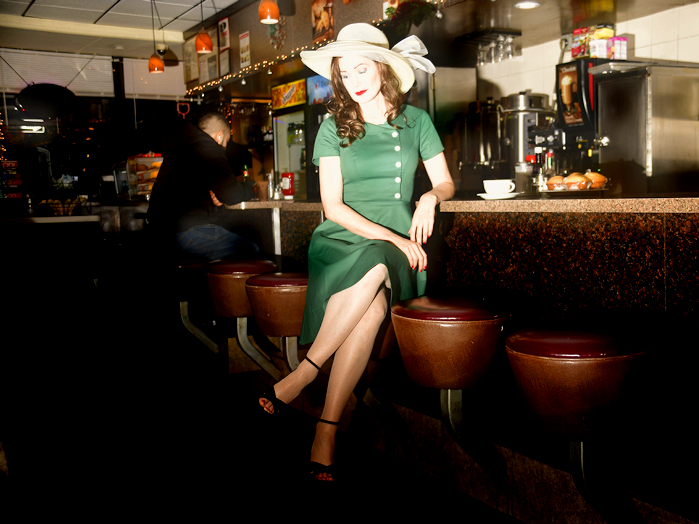
According to the New York Times, Hector’s is part of a small collective with seven meatpackers on Washington Street. The co-op has a deal with the City of New York to retain its below-market rents until 2032. This explains how a modest fifties diner has managed to stay in business for seventy years amidst some of the priciest real estate in New York. The good news is you’ve got ten more years to sidle up to the counter for a burger and shake or the best fish tacos in town.
Just down the street, the Whitney Museum is displaying an exhibit called Edward Hopper’s New York (until March 5, 2023). Photographer Phil took me to the exhibit with his partner (who is also our lighting assistant), Amy, a few Saturdays ago. We were overtaken with the loneliness of being an outsider looking in that Hopper’s art evokes. Phil and I discussed how we both express this vantage point in our art, capturing hidden private moments in public and falling in love with our subjects for their humanness and vulnerability. The Hopper vibe haunted us for days afterwards, and we decided to try to replicate Hopper’s alienation for this month’s shoot.
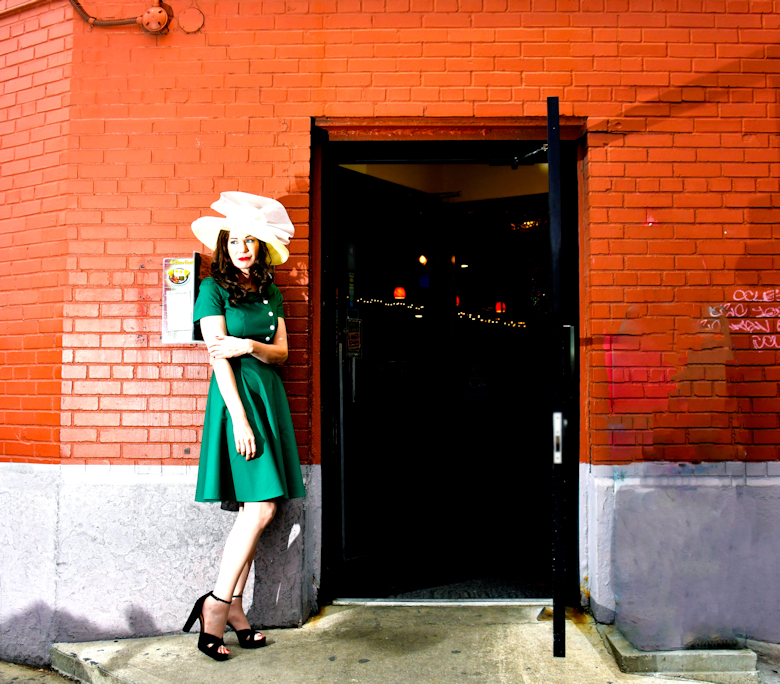
And what better location than Hector’s, which Hopper (1882-1967) likely visited during forays from his Washington Square apartment. Despite health problems, Hopper continued to paint masterworks into his seventies. I can imagine him stopping in at Hector’s after an afternoon of rambling over the cobblestone streets past slaughterhouses, garages, and marine suppliers.
Although we wanted to evoke a Hopper vibe in the photos this month, Hector’s Cafe couldn’t have been warmer or more inviting. Christmas decorations brought extra cheer, many of the patrons were enjoying a World Cup soccer game, and a UPS worker sat together with a USPS servant at a table near us, allies in the fight to delay delivery and lose our packages.
In the Whitney exhibit, Hopper’s work portrays an evolving city in the first half of the twentieth century, and the curators provide excellent commentary on the historical changes society went through during this period. For example, from Automat, shown above, Amy and I learned that by 1927, women were able to dine alone safely in respectable places such as the Automat, and some professional women had the earning power to do so. I encourage you to see the exhibit and savor Hopper’s wrenching vision of love for New York mixed with existential despair. But if you can’t make it over to the museum, the Whitney has created an interactive map to show Edward Hopper’s New York then and now.
This fascinating 13-minute video is also illuminating and gives you a flavor the world of Hopper. I’ve set it to start near the end, where Hopper describes that his intention in departing from strict representation is to intensify the expression of the subject that he is trying to convey—the inner life of the artist and his personal vision of the world.
This article first appeared in The Village Sun.
Style Notes
- Wedtrend 1950s Audrey Hepburn-style green day dress, with swing skirt, asymmetrical shawl collar, and white buttons. Sadly, I looked in 4 or 5 vintage shops in the neighborhood but couldn’t find a 50s-style dress in time for the photoshoot, so I went online this month.
- Layered-brim cream garden-party hat with tulle bow. Evokes the Royal Ascot, evidently! Beacon’s Closet, 10 W. 13th St.
- Lord & Taylor green and black plaid tam embellished with emerald tear-drop pin. On loan from the private collection of the Chatelaine of Chapeaux, my dear friend Linda Zagaria.
- Jessica Simpson “Irbella” black suede 40s-style strappy platform sandals. DSW, 40 E. 14th St.

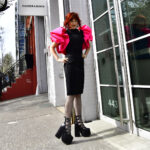

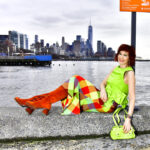
Another great column. The photos truly capture the ambiance Hopper evokes in his paintings…Hopper was perhaps the first artist to see the increasing loneliness in the urban landscape as skyscrapers shot up, and human beings below seemed abandoned in the “horizontal world”…love the info on Hectors too–have always wondered about that place! Will have to walk inside one day… : )
Thanks, Pat! I like your picture of humans in the horizontal world, abandoned and insignificant amongst the skyscrapers.